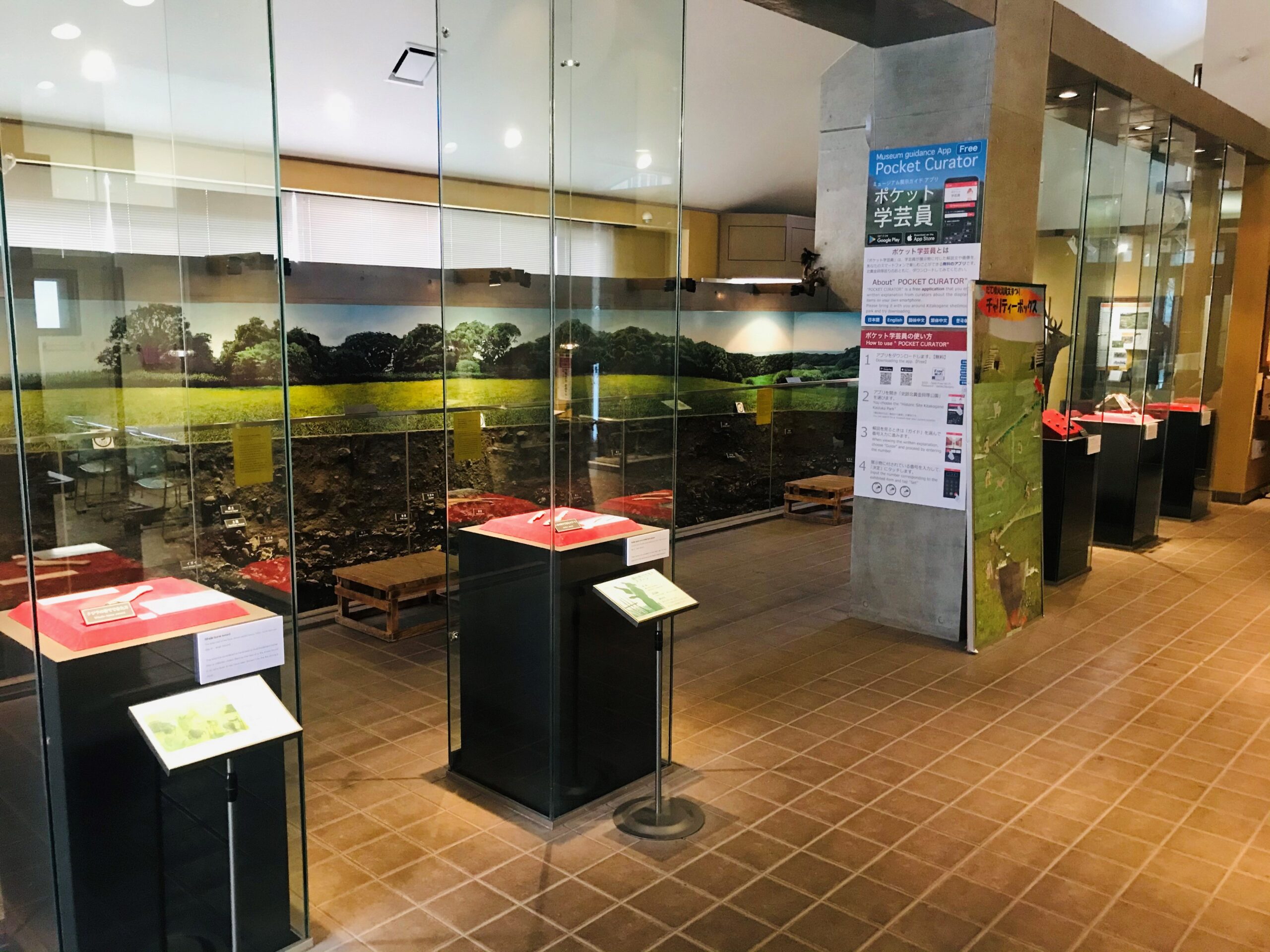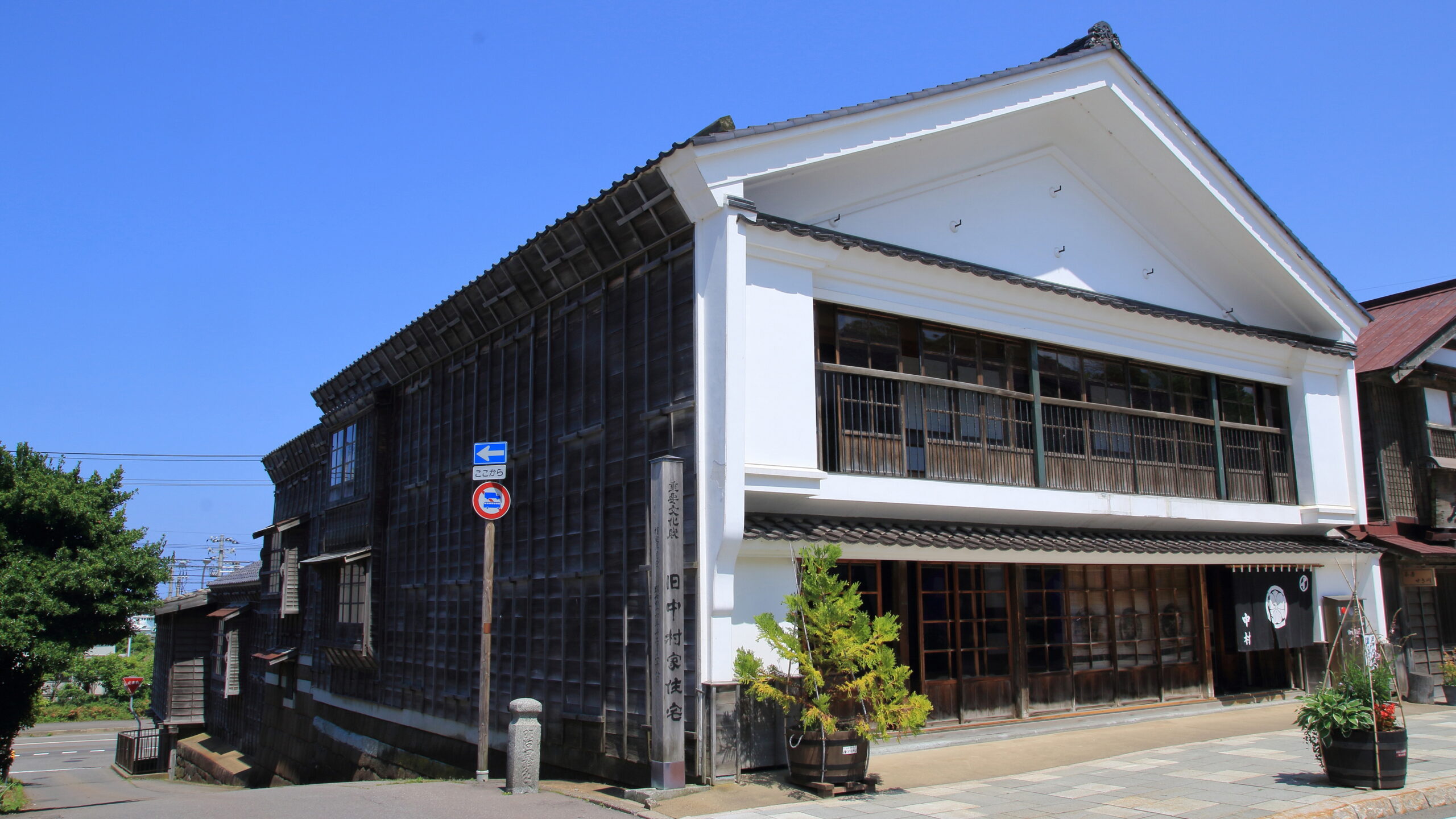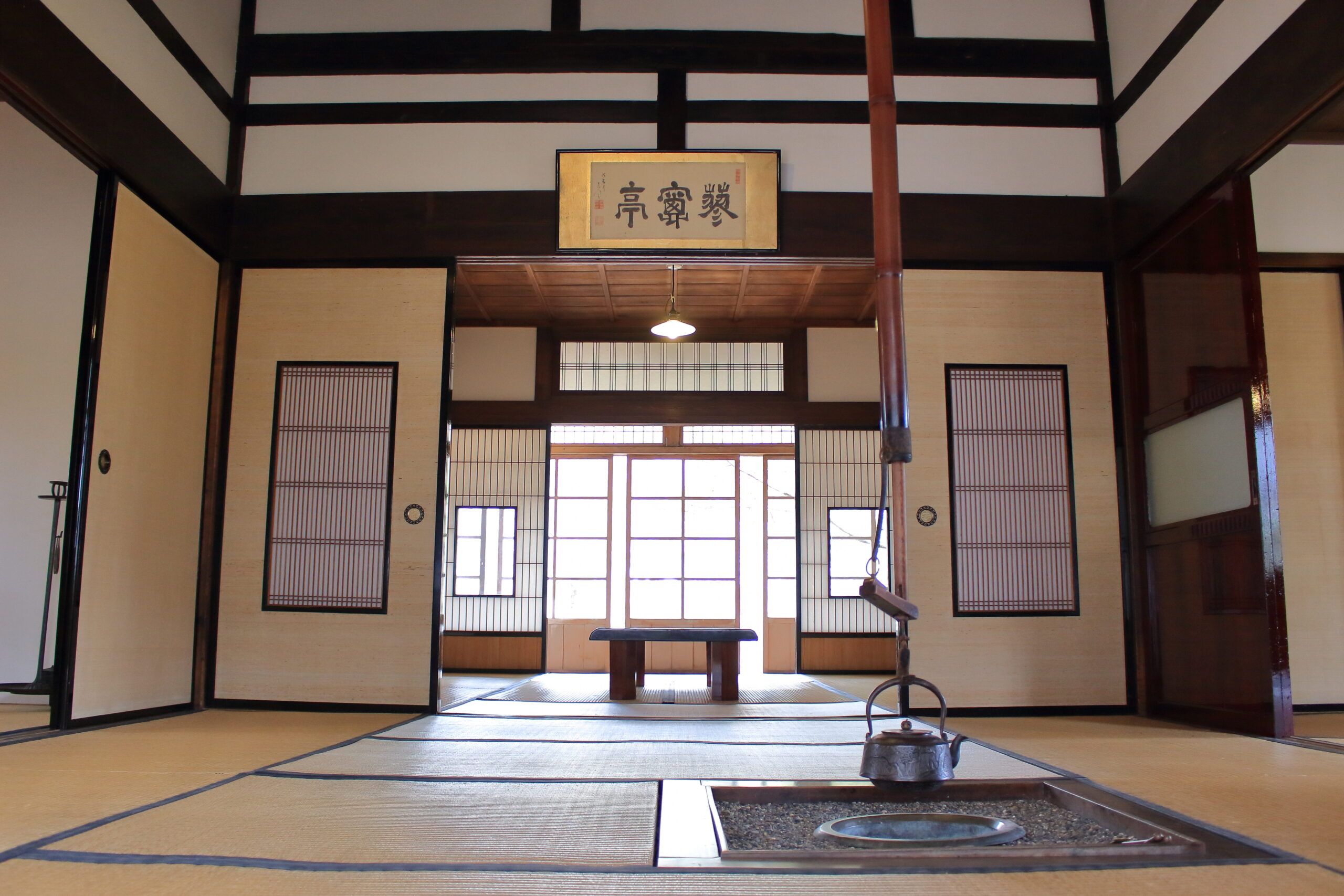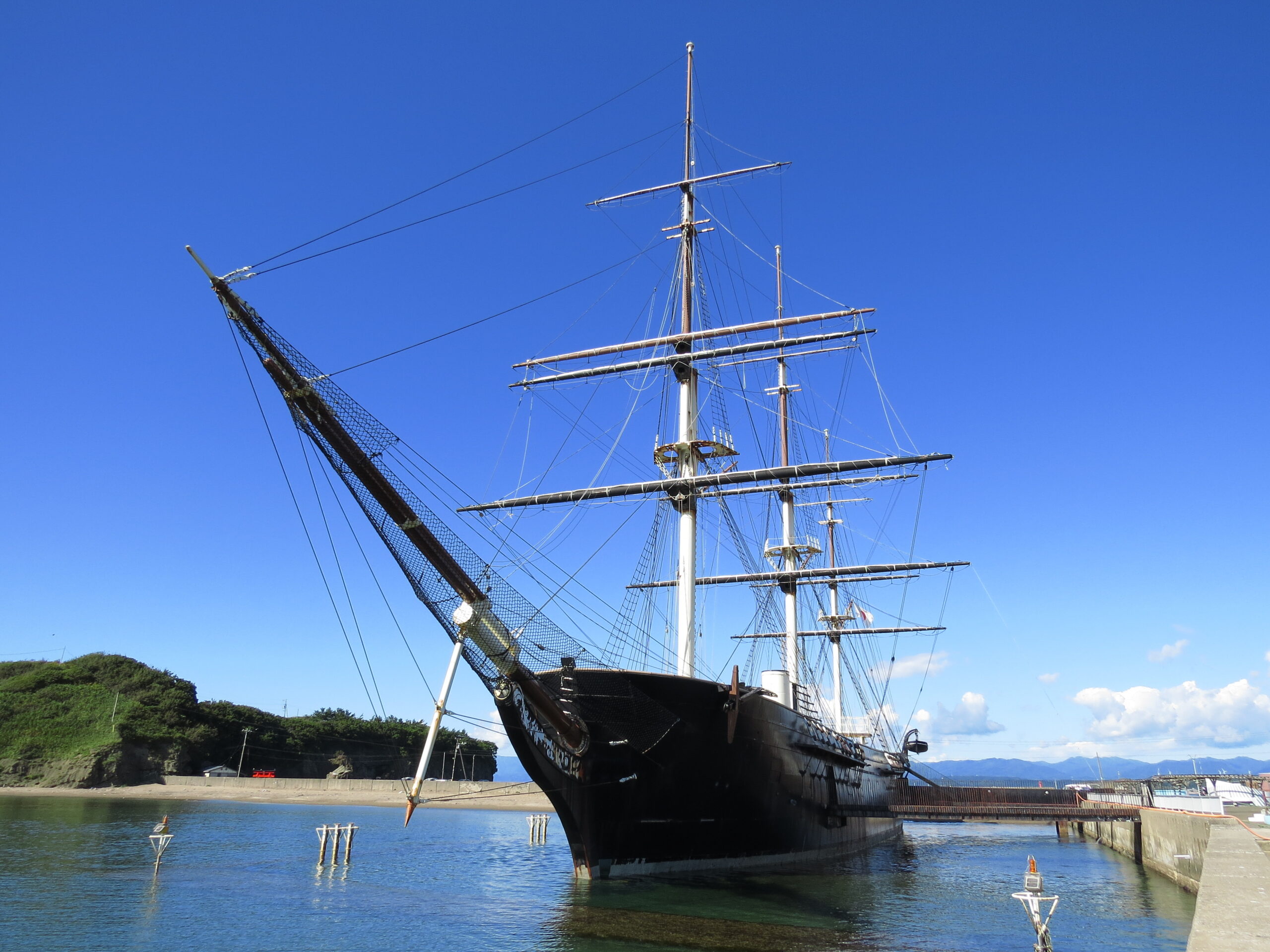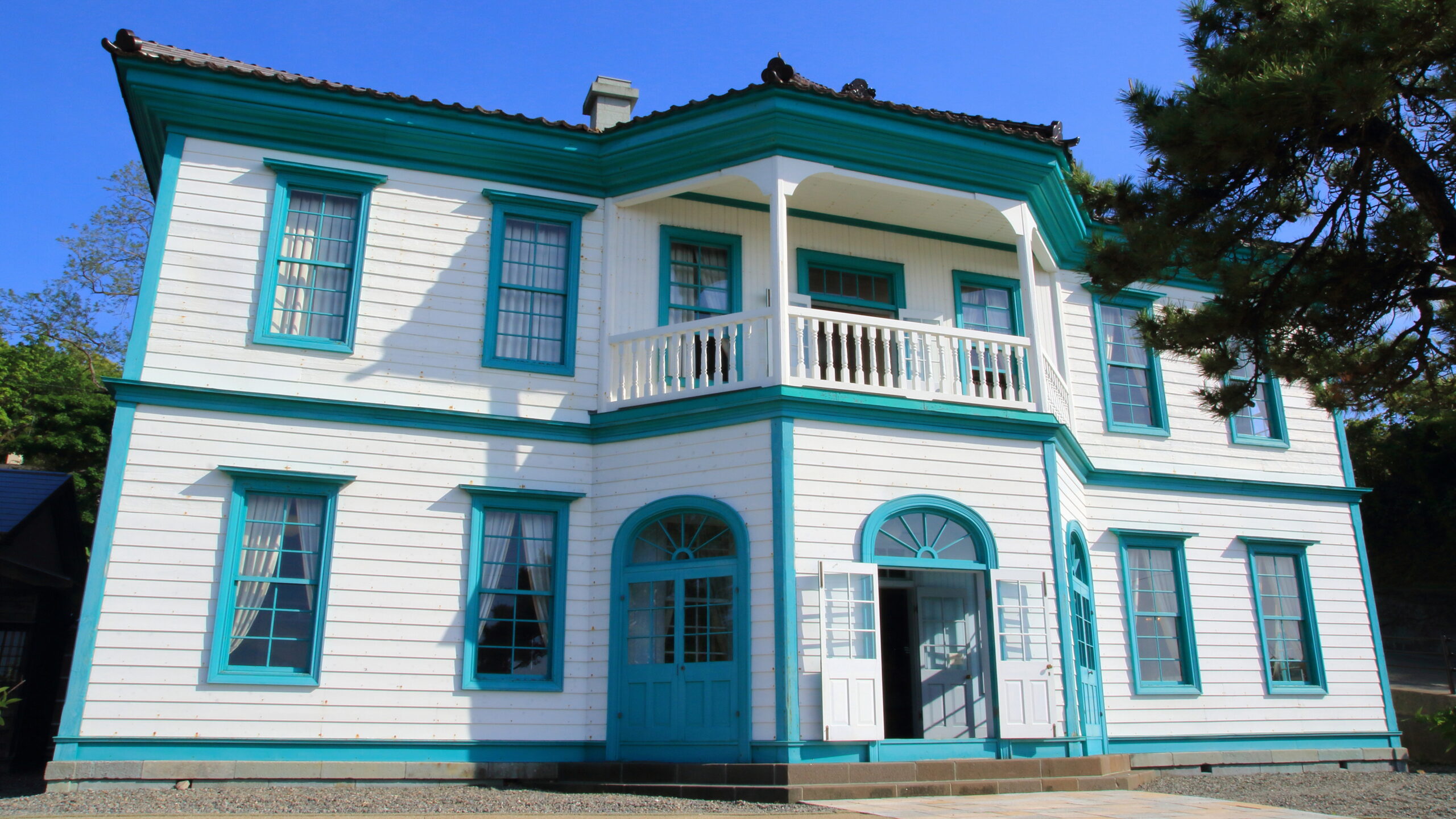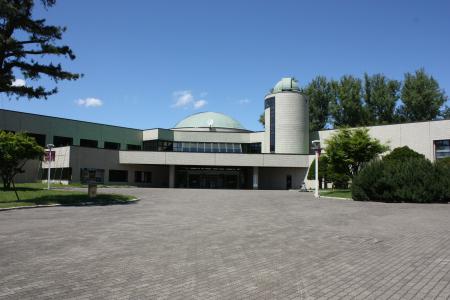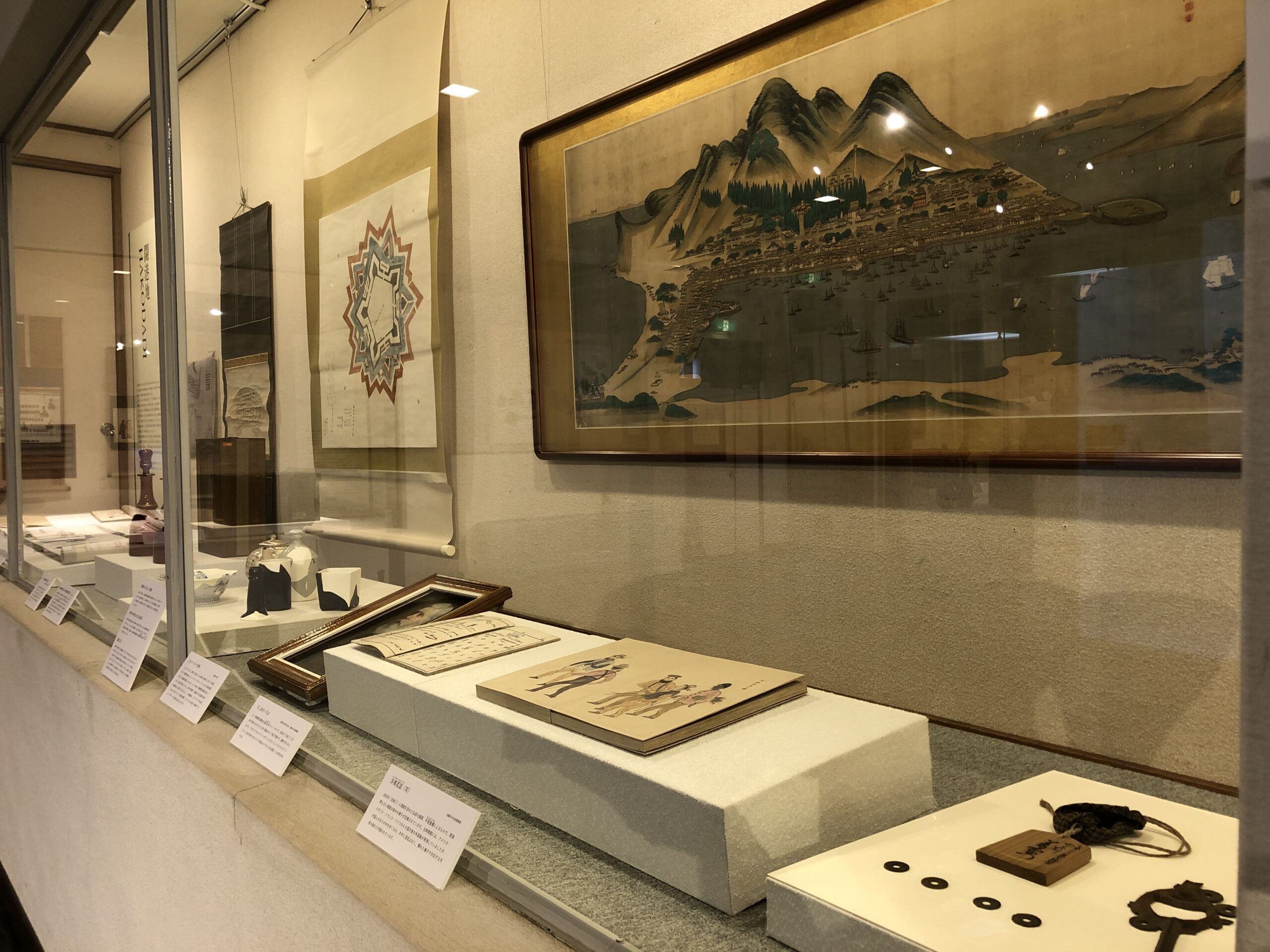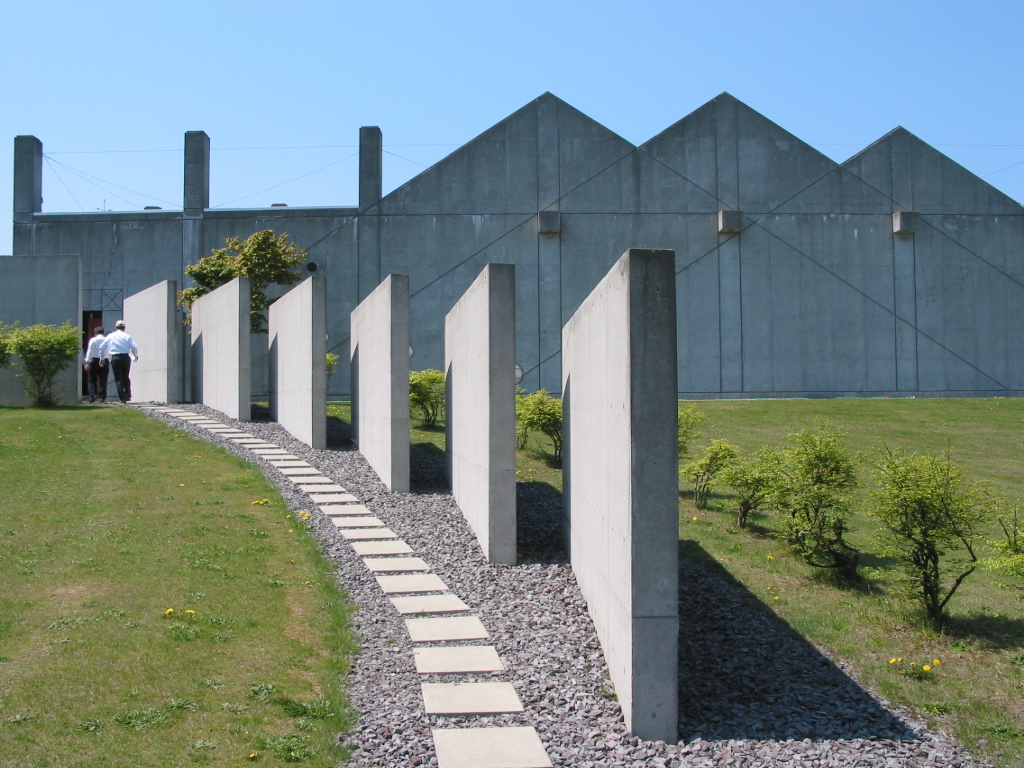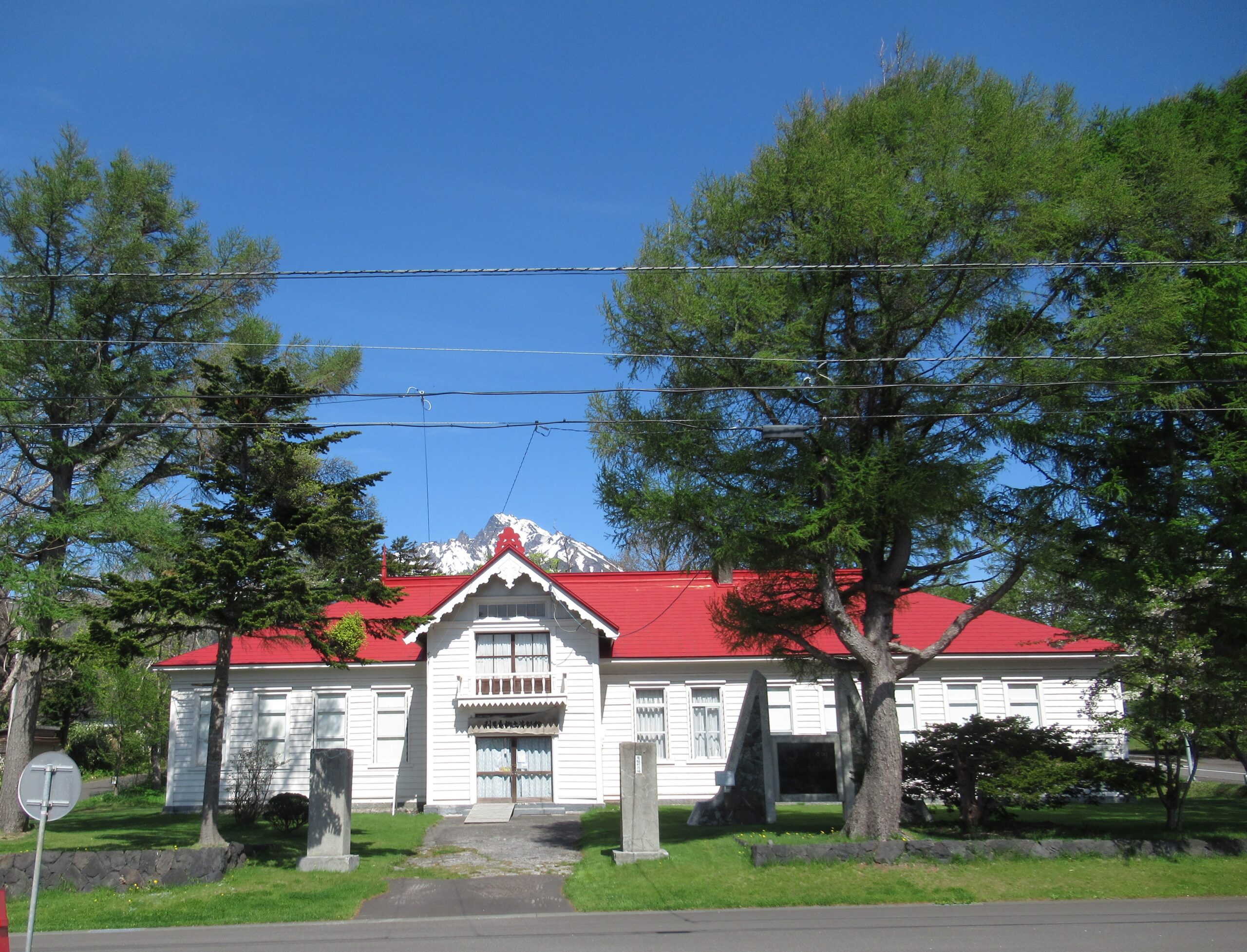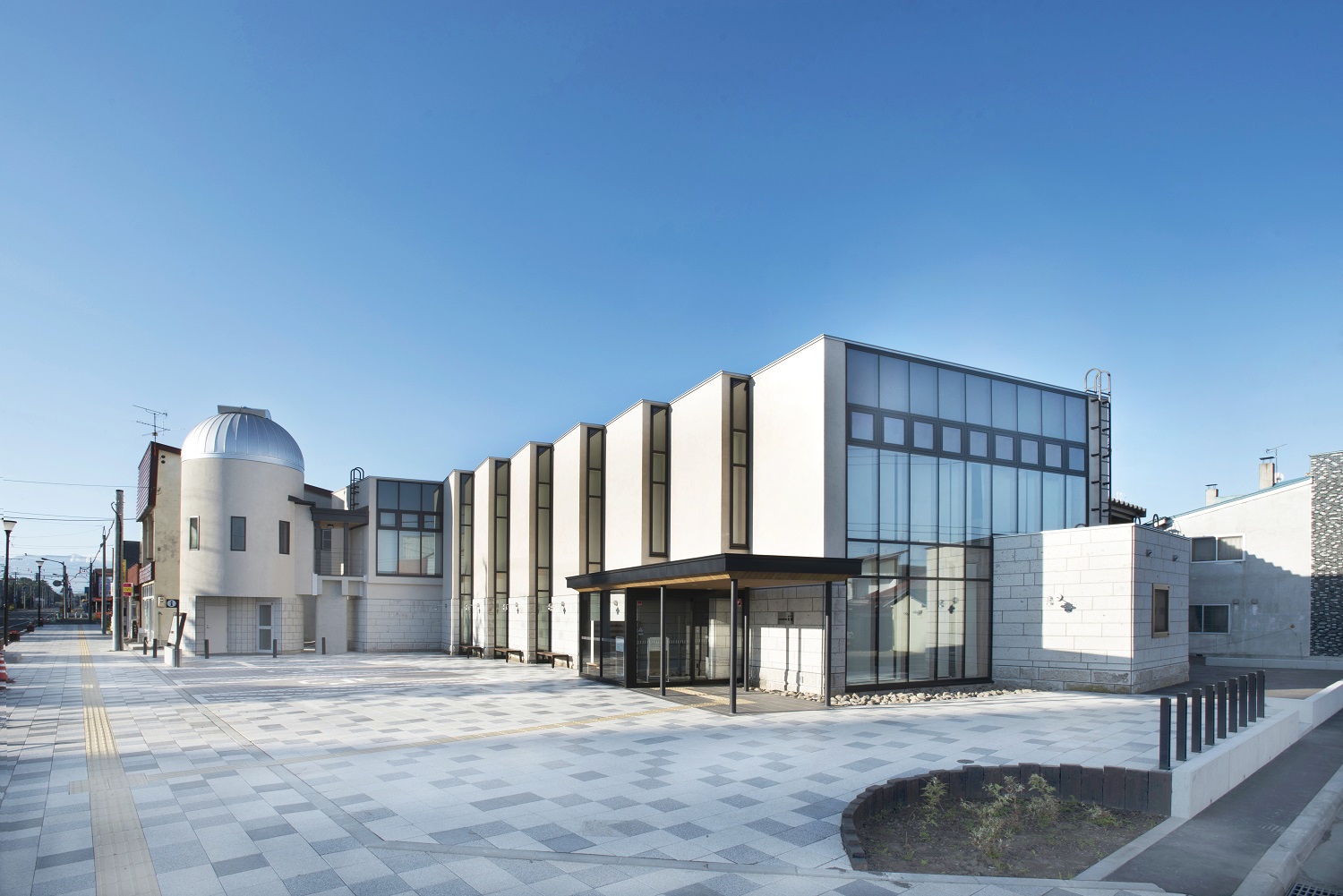This facility showcases pottery vessels, stone tools, and other unearthed items that convey the life led at the Kitakogane Site and rituals and ceremonies held there. Among those archaeological finds, the numerous grinding stones and ritual implements made from whale bones are not to be missed.
施設
The Former Nakamura Family Merchant House
This mercantile building complex faces Inishie Road, the main street of Esashi Town. It was designated as a National Important Cultural Property 1971.
The complex consists of four structures: a main house, a warehouse that includes a library, a second warehouse (shimono-kura), and a third warehouse (hanedashi) where ships could anchor to load and unload goods. Characteristically, these structures stand in a line on a gently descending slope from Inishie Road toward the seashore.
Visitors can tour inside the building complex and view materials regarding herring fishery and trade by the kitamaebune merchant ships that traveled between Hokkaido and Osaka.
The Former Sekikawa Family Villa
This facility was a villa of the Sekikawa Family, who engaged in various business in central Esashi from the mid-Edo to Meiji periods (the 18th and 19th centuries). Built from the late Edo to the early Meiji periods (the late 19th century), the facility consists of a main house and an earthen warehouse. They were collectively designated as a Tangible Cultural Property of Esashi Town in 1981. Today, the warehouse displays pottery, lacquerware, and other heirlooms that were handed down in the Sekikawa family.
Kaiyomaru Museum
The Kaiyomaru, a warship of the Tokugawa shogunate, was stranded and sank in a blizzard off the coast of Esashi, Hokkaido, during the Battle of Hakodate in 1868.
In 1974, more than a century after that submergence, the shipwreck was found in Esashi Port. This prompted the launch in 1975 of Japan’s first full-scale investigation into the underwater remains. About 30,000 items, including the ship’s fittings, weapons, and everyday utensils, were salvaged from the seafloor.
This museum, a full-scale restoration of the ship, exhibits nearly 3,000 relics and panels explaining the history behind the battleship.
The Former Hiyama Nishi Subprefectural Hall (Esashi Town Museum)
This museum was repurposed from a subprefectural hall that was built in 1887. The building has been designated as a Tangible Cultural Property of Hokkaido.
The Esashi Town Basic Vision for Historic and Cultural Resources, developed in 2017, focuses on the town’s historic and cultural resources in terms of four characteristics.
(1) Historic and cultural resources based on geographical features centering on Kamome Island
(2) Historic and cultural resources based on the culture that was introduced from Honshu, Japan’s main island, and was adapted to the climate of Esashi
(3) Historic and cultural resources with integrated tangible and intangible elements
(4) Historic and cultural resources that have become integral to the daily rhythms of local residents and that are still enjoyed by them
This museum displays exhibits not in chronological order or by field, but narratively based on the four characteristics listed above.
Visitors to Esashi are welcome to learn about the historic and cultural resources of the town at this museum.
Kitami Region Museum of Science, History and Art
This complex consists of a science museum, a history museum, an art museum, and a planetarium.
Hakodate City Museum
This museum exhibits local historical materials, including coins excavated from medieval remains in the Shinori area of Hakodate, which constitute the largest coin hoard found to date in Japan and are collectively designated as a National Important Cultural Property. Other exhibits include items collected by the museum from the Meiji period, genre paintings of indigenous Ainu people, and materials on the 1854 American expedition led by Commodore Perry to Hakodate, the Battle of Hakodate, and the Great Fire of Hakodate.
The museum is nestled in the quiet Hakodate Park in the proximity of the Old Hakodate Museum No. 1 (Hokkaido Development Commission Hakodate Provisional Museum), which opened in 1879 and is the oldest existing museum building in Japan, and the Old Hakodate Museum No. 2, which opened in 1884. The area with these museums is ideal for strolls during the cherry blossom and autumn foliage seasons.
Culture Center and Rippu Hall
The building housing these facilities, which is nestled amidst a luxuriant forest, was designed with inspiration drawn from Mt. Rishiri, also called “the Mt. Fuji of Rishiri,” a ship, and more. In addition to paintings, sculptures, and other artworks, exhibits at the Culture Center include panels introducing Hokkaido heritages and lamps once used at Oshidomari Lighthouse. Rippu Hall displays locally unearthed archaeological finds dating from the Jomon and Okhotsk culture periods.
Rishiri Historical Museum
This museum is housed in a historical building repurposed from the former Oniwaki Village Office building constructed in 1913. Exhibits are divided into four sections, each featuring the nature and creatures of Rishiri, the days when indigenous Ainu people lived on the island and called it Ri-sir (Ainu for “island with a high peak”), modern days, and days with thriving herring fishery. Behind the facility is an alpine botanical garden. The museum is more than a popular tourist destination; it is also a haunt for local residents interested in the town’s history.
Biei Local Museum Misora
This museum opened in 2016 to introduce Biei, a town of hills, and its nature and astronomical orientation to local residents and many others. The facility shows the history of agriculture and tourism in Biei, as well as the town’s efforts to preserve rich natural ecosystems in the Tokachidake Mountains and to have the region certified as a geopark*. The facility adjoins the Misora Astronomical Observatory, which is equipped with a 40-centimeter reflecting telescope (nicknamed Pikari). The telescope allows visitors to see stars of first-magnitude or brighter even during the day.
*As an associate member of the Japanese Geoparks Network, the towns of Biei and Kamifurano are working to have their area certified as a geopark.

